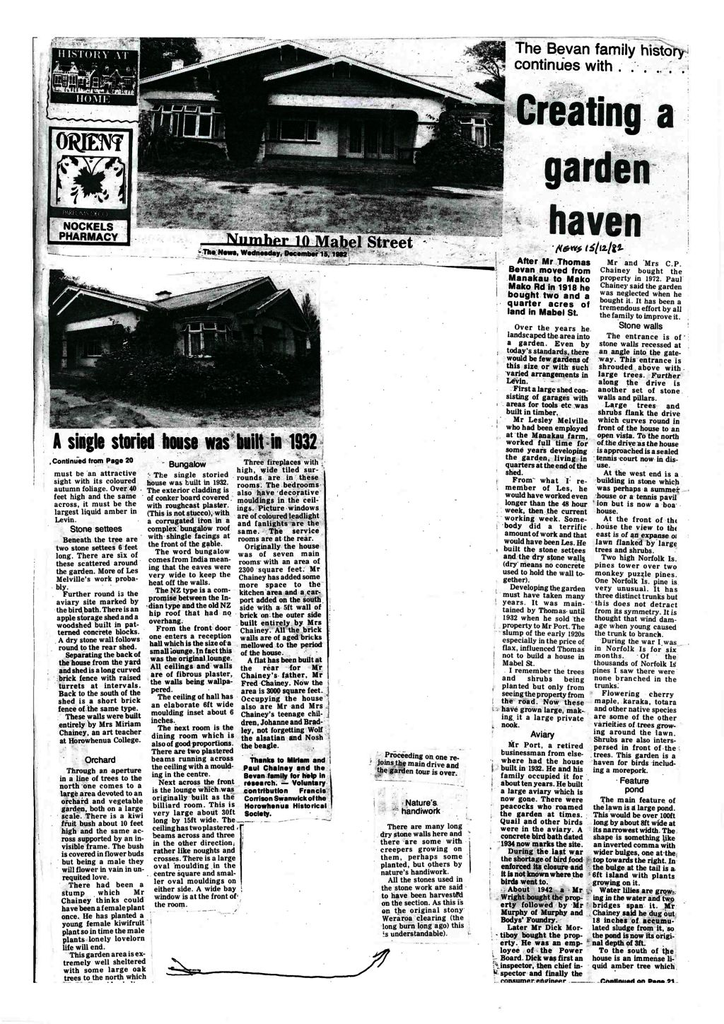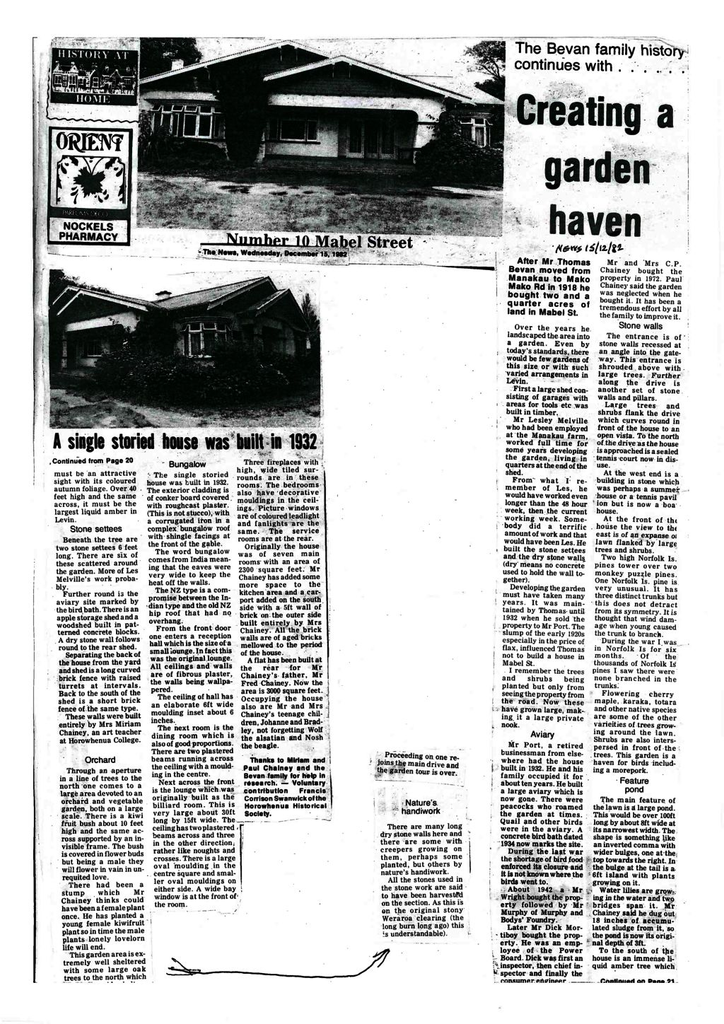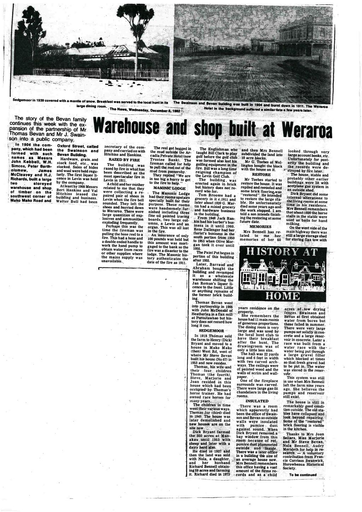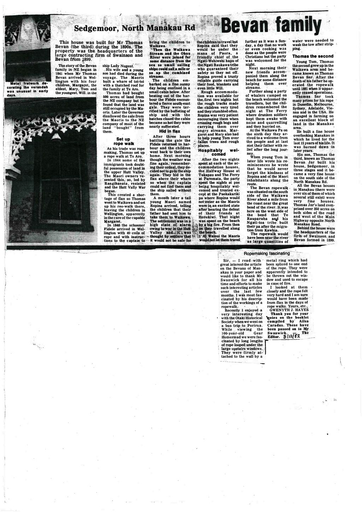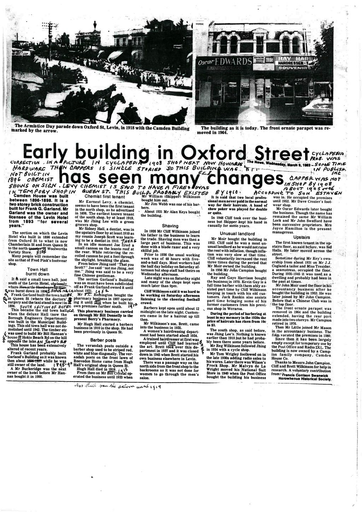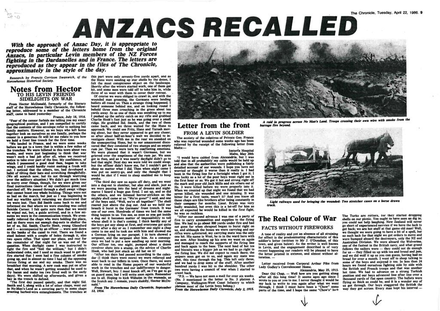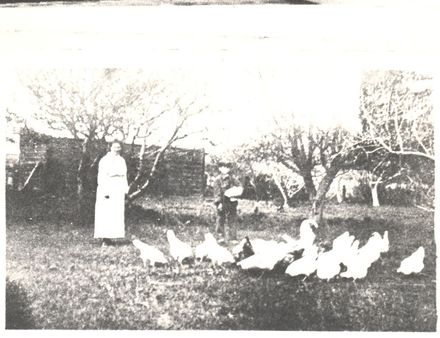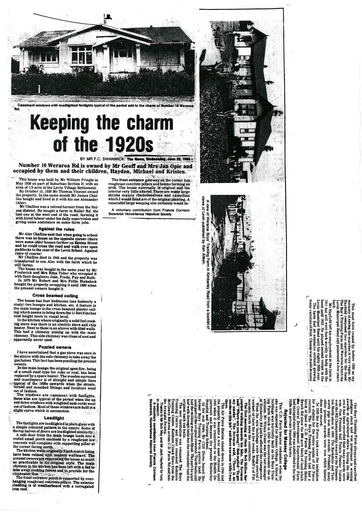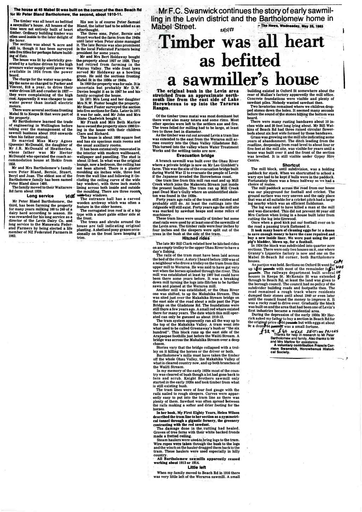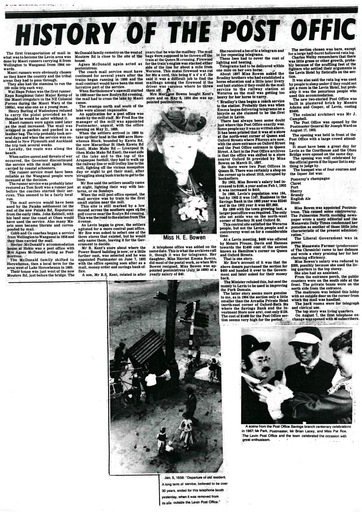Creating a garden haven
- Description
 Over the years he landscaped the area into a garden. Even by today’s standards, there would be few gardens of this size or with such varied arrangements in Levin.
Over the years he landscaped the area into a garden. Even by today’s standards, there would be few gardens of this size or with such varied arrangements in Levin. First a large shed consisting of garages with areas for tools etc. was built in timber.
Mr Lesley Melville who had been employed at the Manakau farm, worked full time for some years developing the garden, living in quarters at the end of the shed.
From what I remember of Les, he would have worked even longer than the 48 hour week, then the current working week. Somebody did a terrific amount of work and that would have been Les. He built the stone settees and the dry stone walls (dry means no concrete used to hold the wall together).
Developing the garden must have taken many years. It was maintained by Thomas until 1932 when he sold the property to Mr Port. The slump of the early 1920s especially in the price of flax, influenced Thomas not to build a house in Mabel St.
 I remember the trees and shrubs being planted, but only from seeing the property from the road. Now these have grown large, making it a large private nook.
I remember the trees and shrubs being planted, but only from seeing the property from the road. Now these have grown large, making it a large private nook.Aviary
Mr Port, a retired businessman from elsewhere had the house built in 1932. He and his family occupied it from about ten years. He built a large aviary which is now gone. There were peacocks which roamed the garden at times. Quail and other birds were in the aviary. A concrete bird bath dated 1934 now marks the site.
During the last war the shortage of bird food enforced its closure and it is not known where the birds went to.
About 1942 a Mr Wright bought the property followed by Mr Murphy of Murphy and Body’s Foundry.
Later Mr Dick Mortiboy bought the property. He was an employee of the Power Board. Dick was first an inspector, then chief inspector and finally the consumer engineer.
Mr and Mrs C.P. Chainey bought the property in 1972. Paul Chainey said the garden was neglected when he bought it. It has been a tremendous effort by all the family to improve it.
Stone walls
The entrance is of stone walls recessed at an angle into the gateway. This entrance is shrouded above with large trees. Further along the drive is another set of stone walls and pillars.
Large trees and shrubs flank the drive which curves round in front of the house to an open vista. To the north of the drive as the house is approached is a sealed tennis court now in disuse.
At the west end is a building in stone, which was perhaps a summer house or a tennis pavilion but is now a boat house.
At the front of the house the view to the east is of an expanse of lawn flanked by large trees and shrubs.
Two high Norfolk Island pines tower over two monkey puzzle pines. One Norfolk Island pine is very unusual. It has three distinct trunks, but this does not detract from its symmetry. It is thought that wind damage when young caused the trunk to branch.
During the war I was in Norfolk Islands for six months. Of the thousands of Norfolk Island pines I saw there were none branched in the trunks.
Flowering cherry, maple, karaka, totara and other native species are some of the other varieties of trees growing around the lawn. Shrubs are also interspersed in front of the trees. This garden is a haven for birds including a morepork.
Feature pond
The main feature of the lawn is a large pond. This would be over 100ft long by about 8ft wide at its narrowest width. The shape is something like an inverted comma with wider bulges, one at the top towards the right. In the bulge at the tail is a 6ft island with plants growing on it.
Water lilies are growing in the water and two bridges span it. Mr Chainey said he dug out 18 inches of accumulated sludge from it, so the pond is now its original depth of 3ft.
To the south of the house is an immense liquidambar tree which must be an attractive sight with its coloured autumn foliage. Over 40 feet high and the same across, it must be the largest liquidamber in Levin.
Stone settees
Beneath the tree are two stone settees 6 feet long. There are six of these scattered around the garden. More of Les Melville’s work probably.
Further round is the aviary site marked by the birdbath. There is an apple storage shed and a woodshed built in patterned concrete blocks. A dry stone wall follows round to the rear shed.
Separating the back of the house from the yard and shed is a long curved brick fence with raised turrets at intervals. Back to the south of the shed is a short brick fence of the same type.
These walls were built entirely by Mrs Miriam Chainey, an art teacher at Horowhenua College.
Orchard
Through an aperture in a line of trees to the north one comes to a large area devoted to an orchard and vegetable garden, both on a large scale. There is a kiwifruit bush about 10 feet high and the same across, supported by an invisible frame. The bush is covered in flower buds but being a male they will flower is vain in unrequited love.
There had been a stump which Mr Chainey thinks could have been a female plant once. He has planted a young female kiwifruit plant so in time the male plant’s lonely lovelorn life will end.
This garden area is extremely well sheltered with some large oak trees to the
North which … [section missing].
Nature’s handiwork
There are many long dry stone walls; here and there are some with creepers growing on them, perhaps some planted, but others by nature’s handiwork.
All the stones used in the stone work are said to have been harvested on the section. As this is on the original stony Weraroa clearing (the long burn long ago) this is understandable.
Bungalow
The single storied house was built in 1932. The exterior cladding is of conker board covered with roughcast plaster. (This is not stucco), with a corrugated iron in a complex bungalow roof with shingle facings at the front of the gable.
The word bungalow comes from India meaning that the eaves were very wide to keep the heat off the walls.
The NZ type is a compromise between the Indian type and the old NZ hip roof that had no overhang.
From the front door one enters a reception hall which is the size of a small lounge. In fact this was the original lounge. All ceilings and walls are of fibrous plaster, the walls being wallpapered.
The ceiling of the hall has an elaborate 6ft wide moulding inset about 6 inches.
The next room is the dining room which is also of good proportions. There are two plastered beams running across the ceiling with a moulding in the centre.
Next across the front is the lounge which was originally built as the billiard room and is very large - about 30ft long by 15ft wide. The ceiling has two plastered beams across and three in the other direction, rather like noughts and crosses. There is a large oval moulding in the centre square and smaller oval mouldings on either side. A wide bay window is at the front of the room.
Three fireplaces with high, wide tiled surrounds are in these rooms. The bedrooms also have decorative mouldings in the ceilings. Picture windows are of coloured leadlight and fanlights are the same. The service rooms are at the rear.
Originally the house was of seven main rooms with an area of 2300 square feet. Mr Chainey has added some more space to the kitchen area and a carport added on the south side, with a 5ft wall of brick built entirely by Mrs Chainey. All the brick walls are of aged bricks mellowed to the period of the house.
A flat has been built at the rear for Mr Chainey’s father, Mr Fred Chainey. Now the area is 3000 square feet. Occupying the house also are Mr and Mrs Chainey’s teenage children, Johanne and Bradley, not forgetting Wolf the Alsatian and Nosh the beagle.
Thanks to Miriam and Paul Chainey and the Bevan family for help in research. Voluntary contribution Francis Corrison Swanwick of the Horowhenua Historical Society.
Identification
- Date
- December 15, 1982
Taxonomy
- Community Tags

